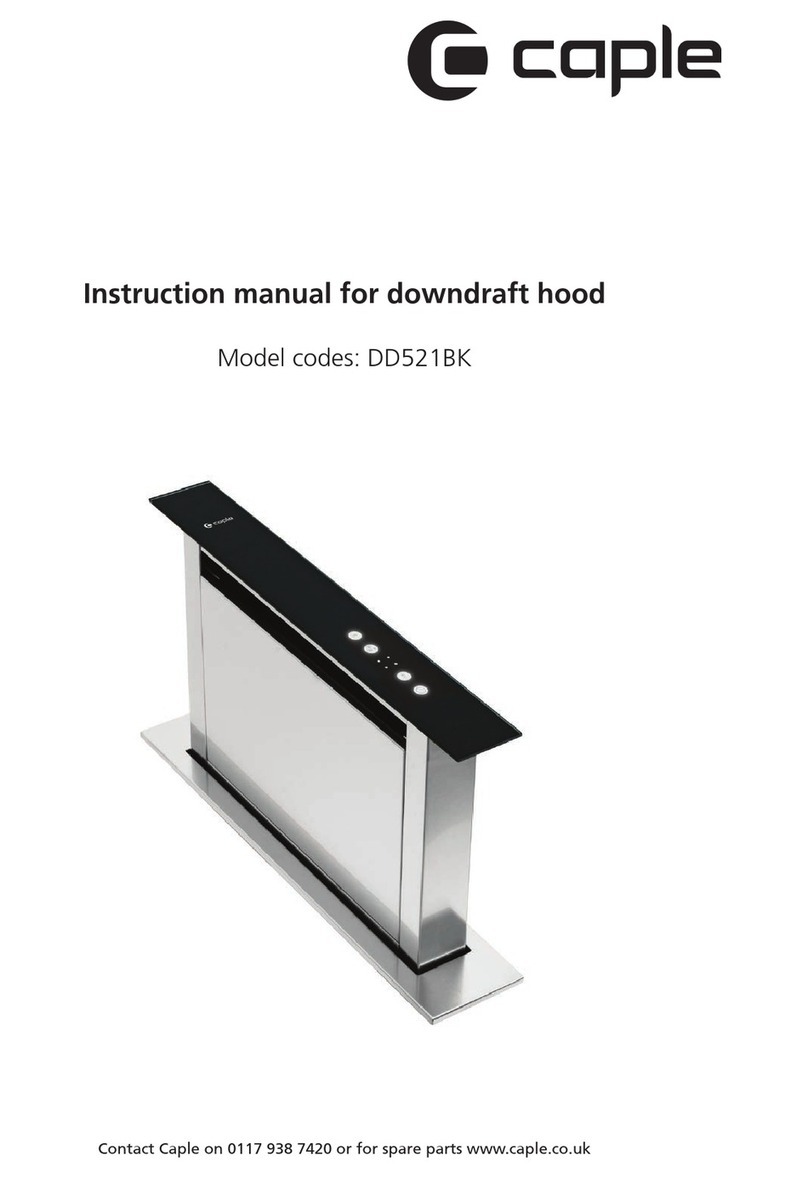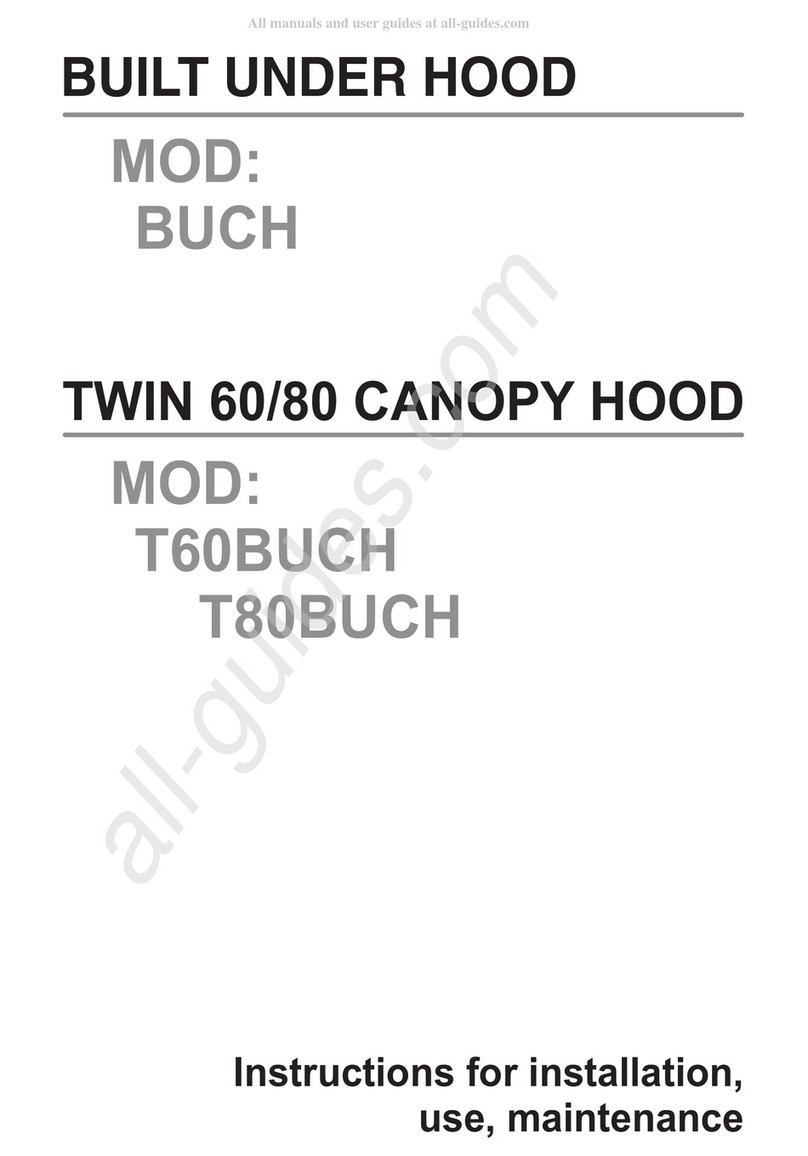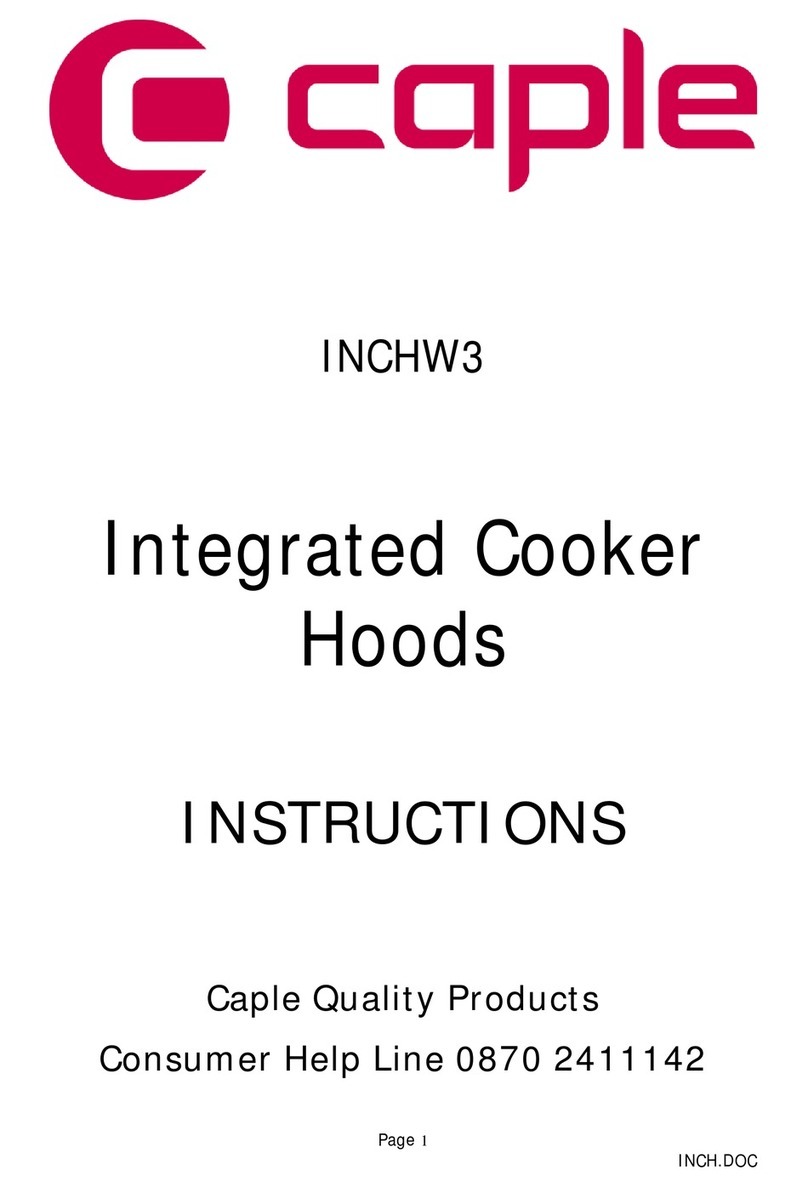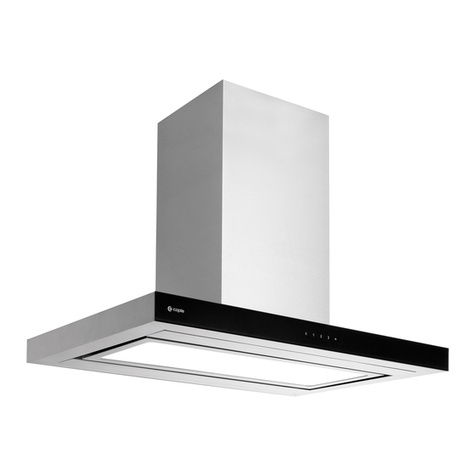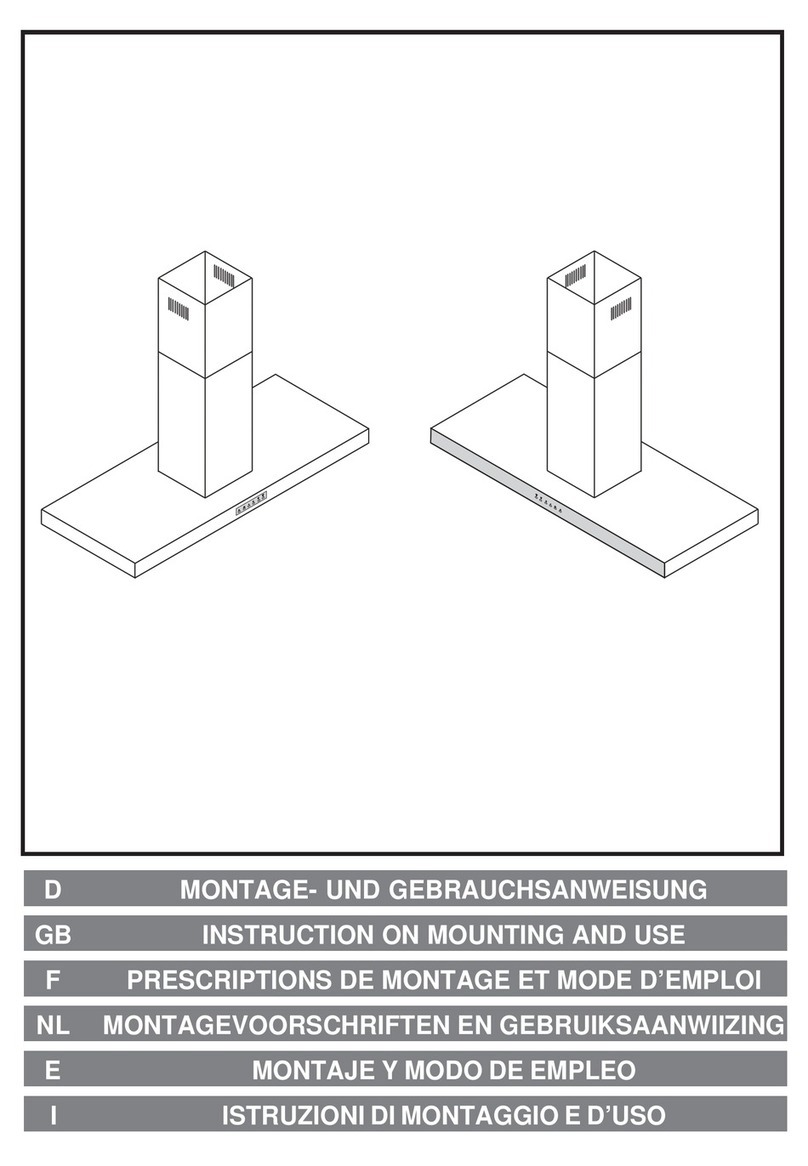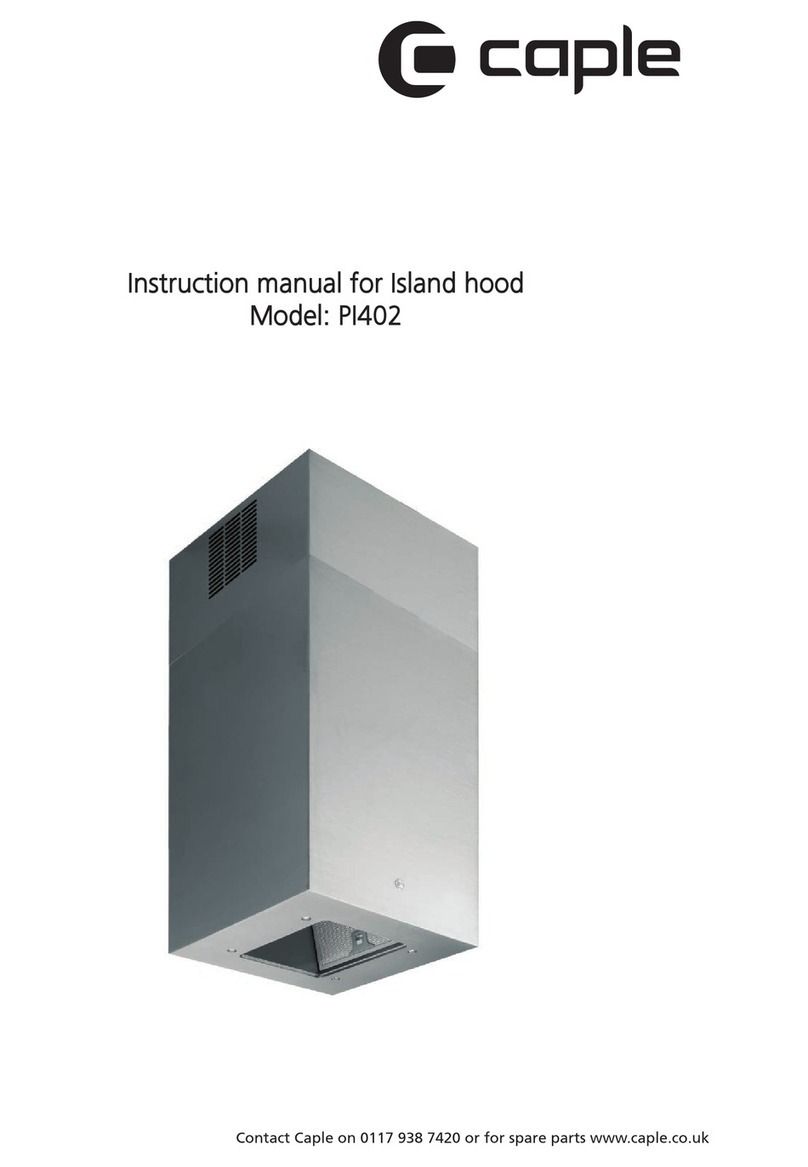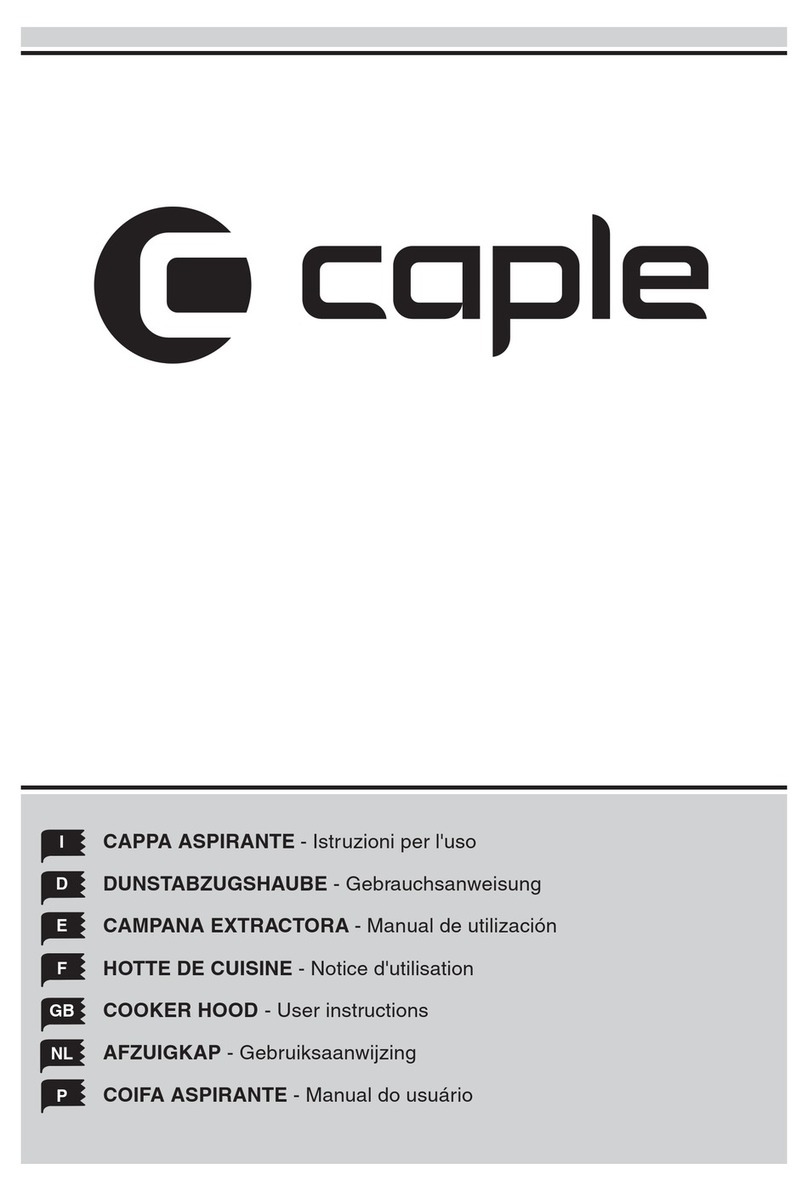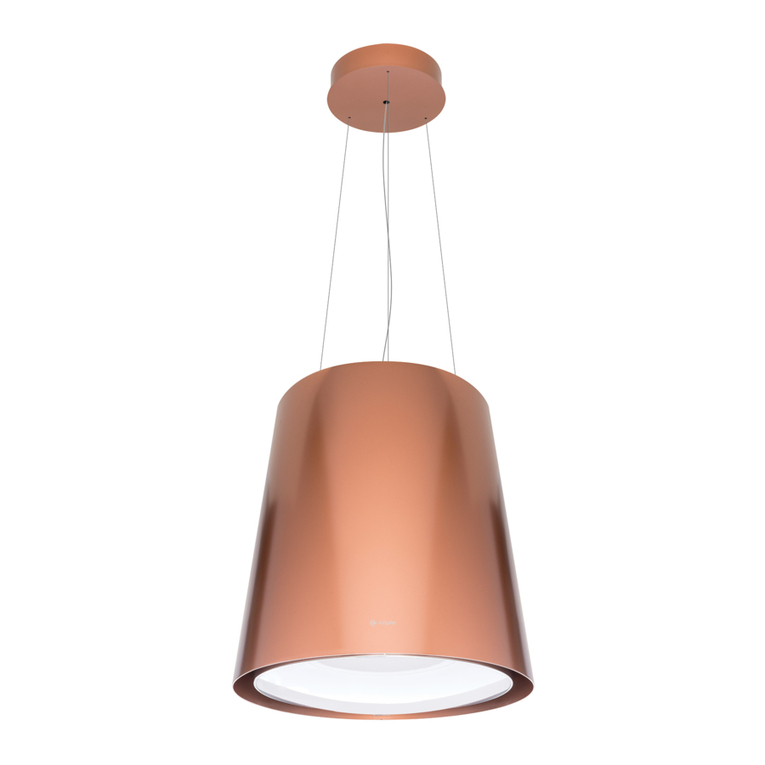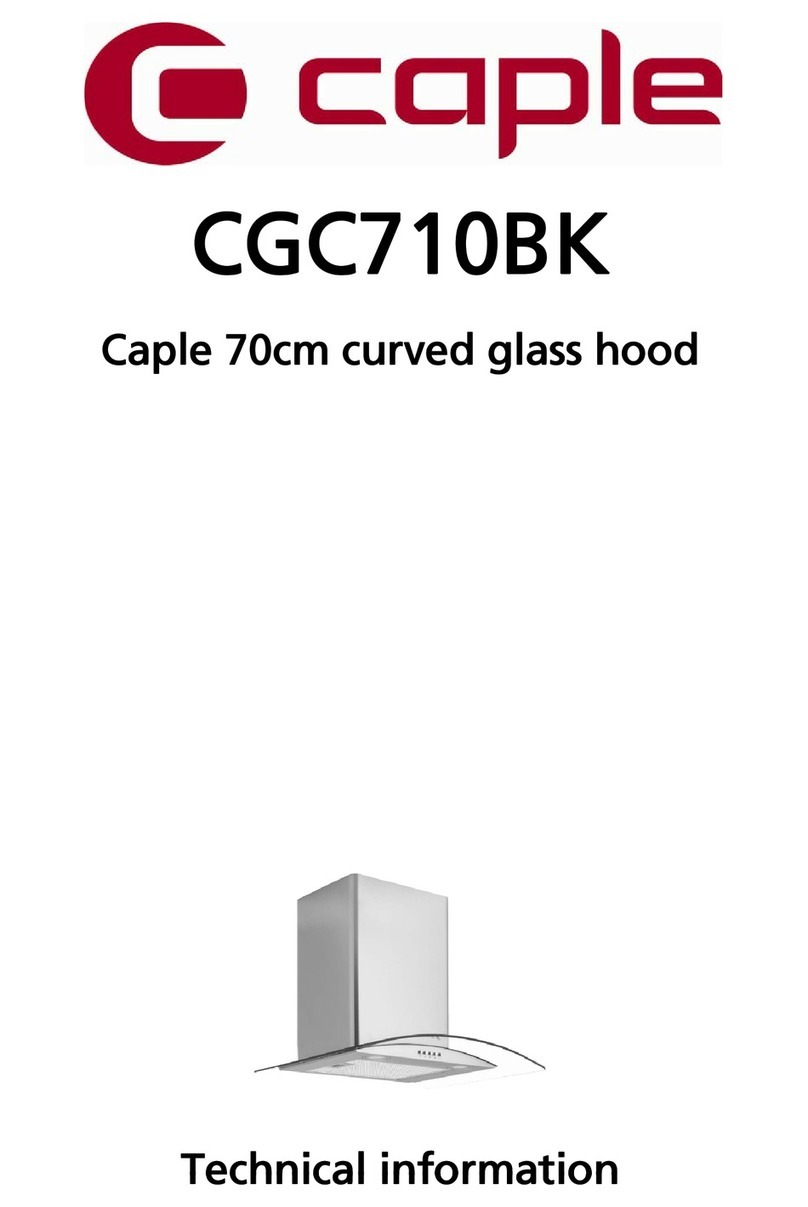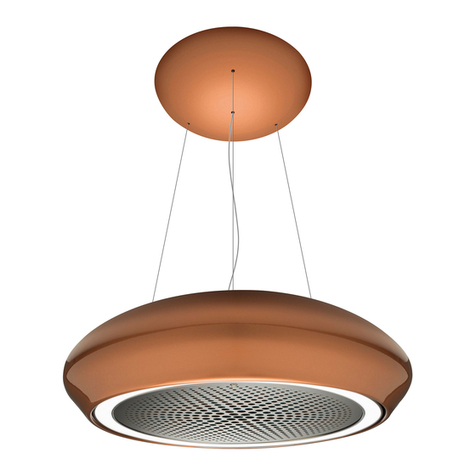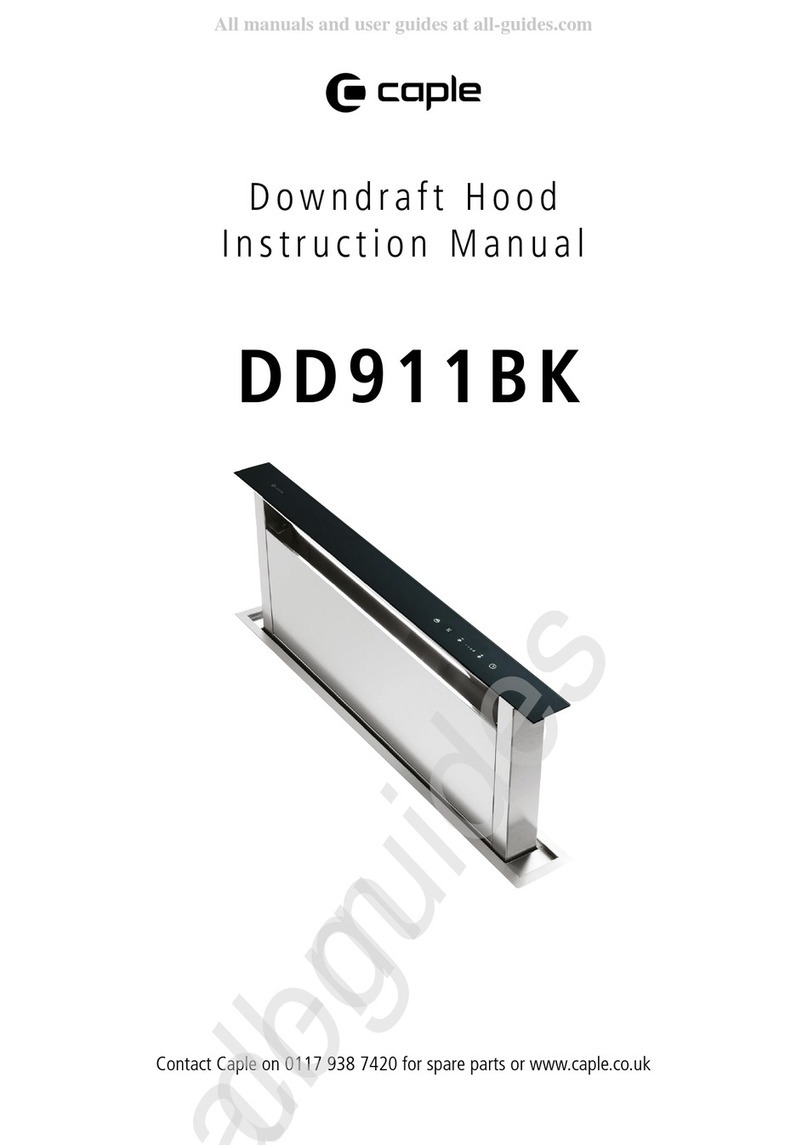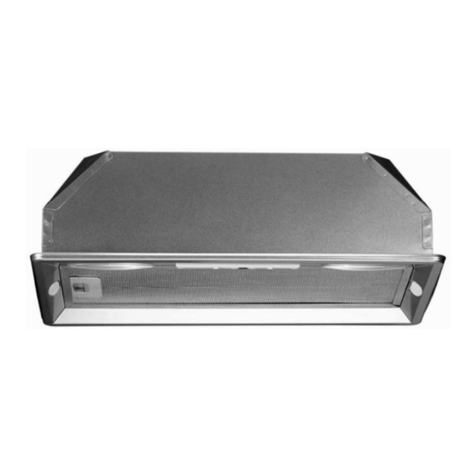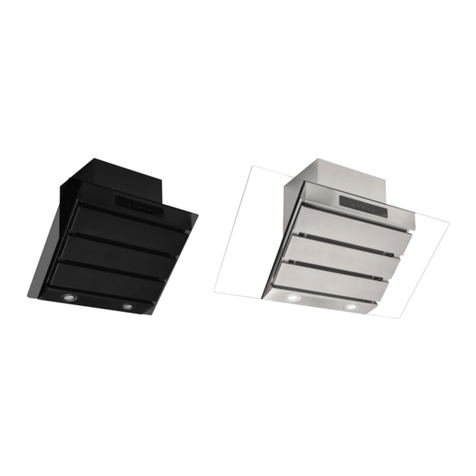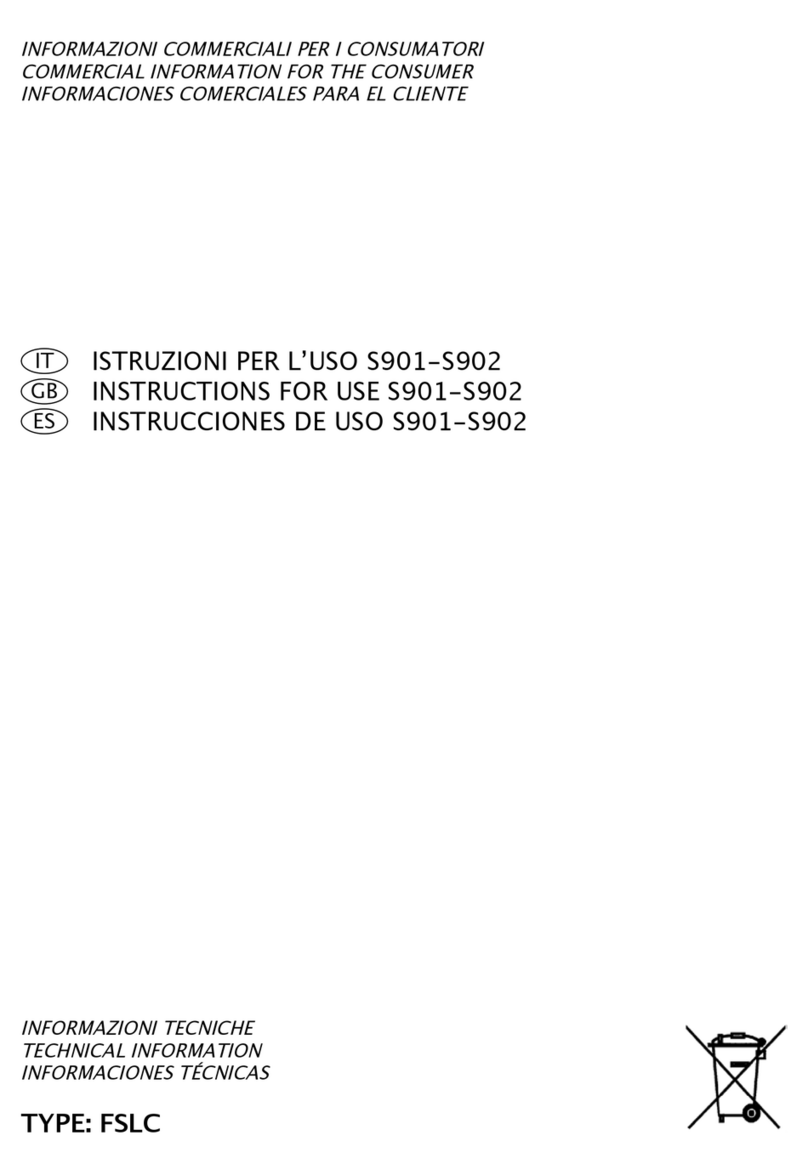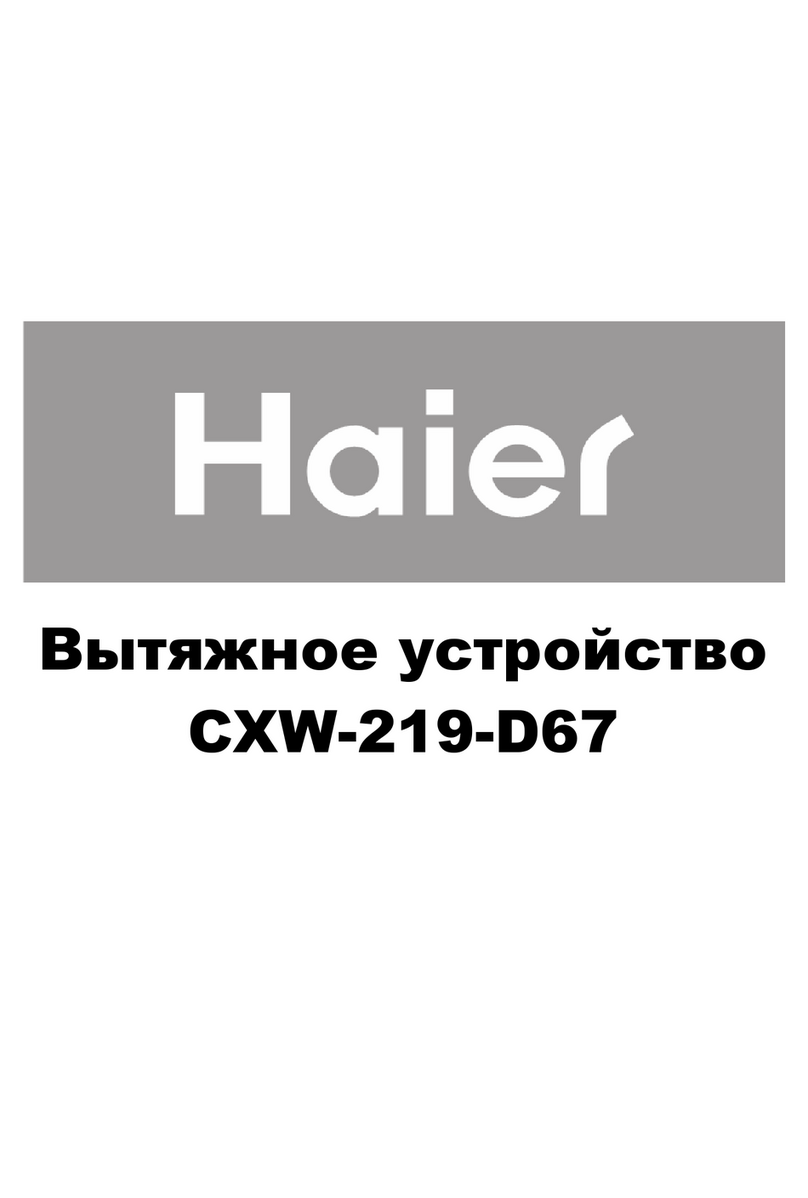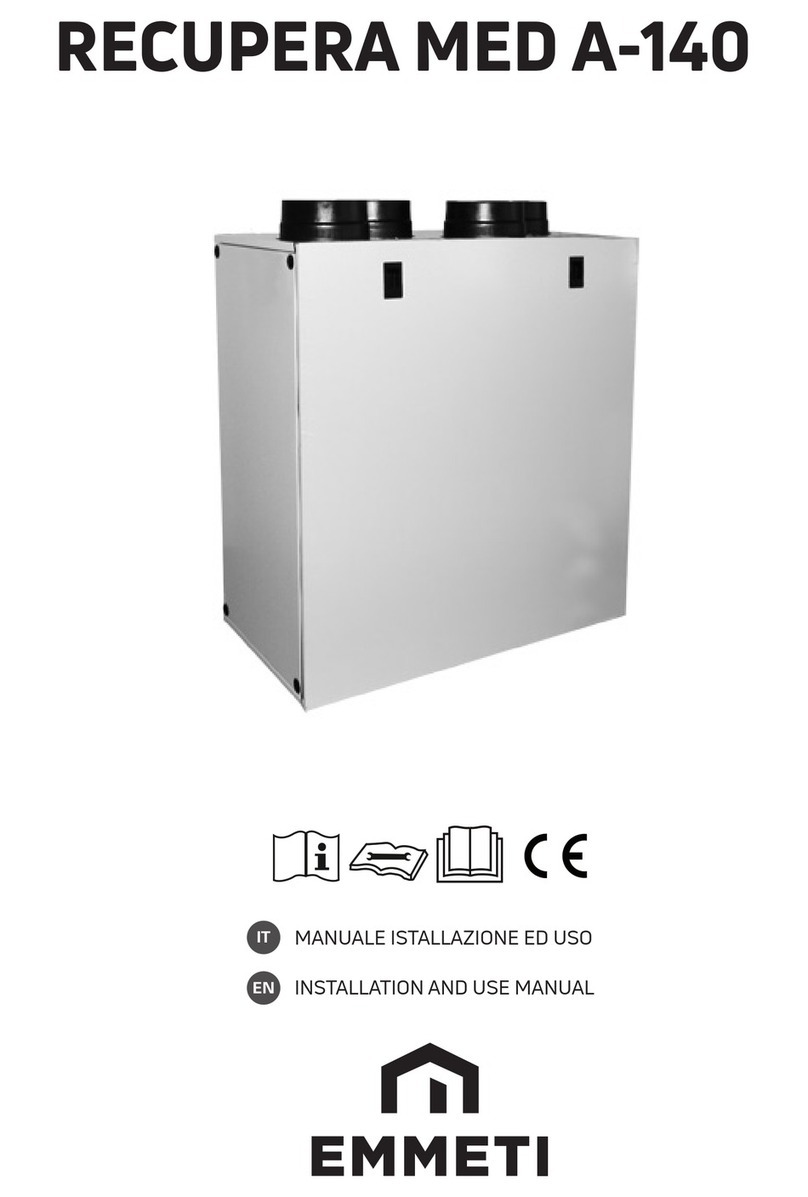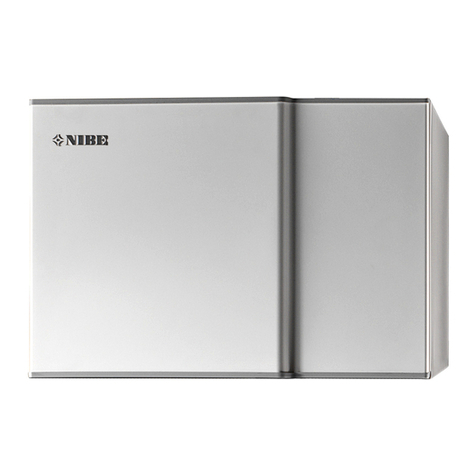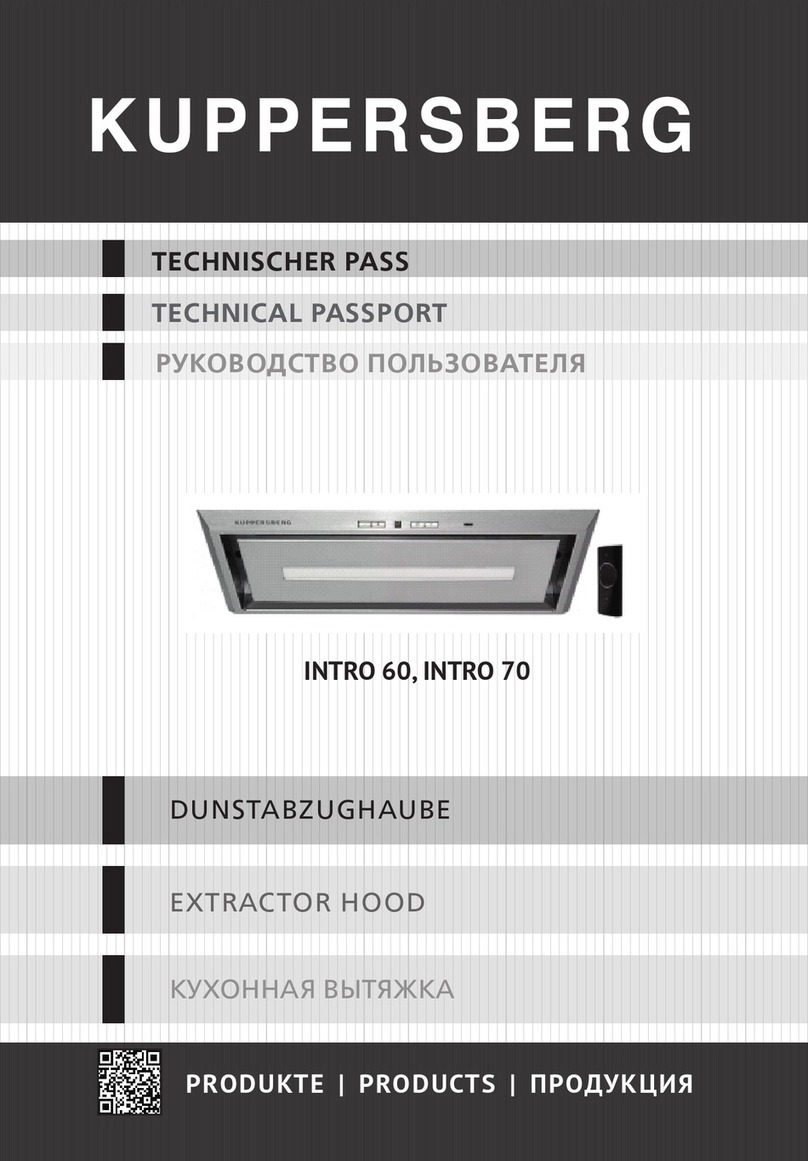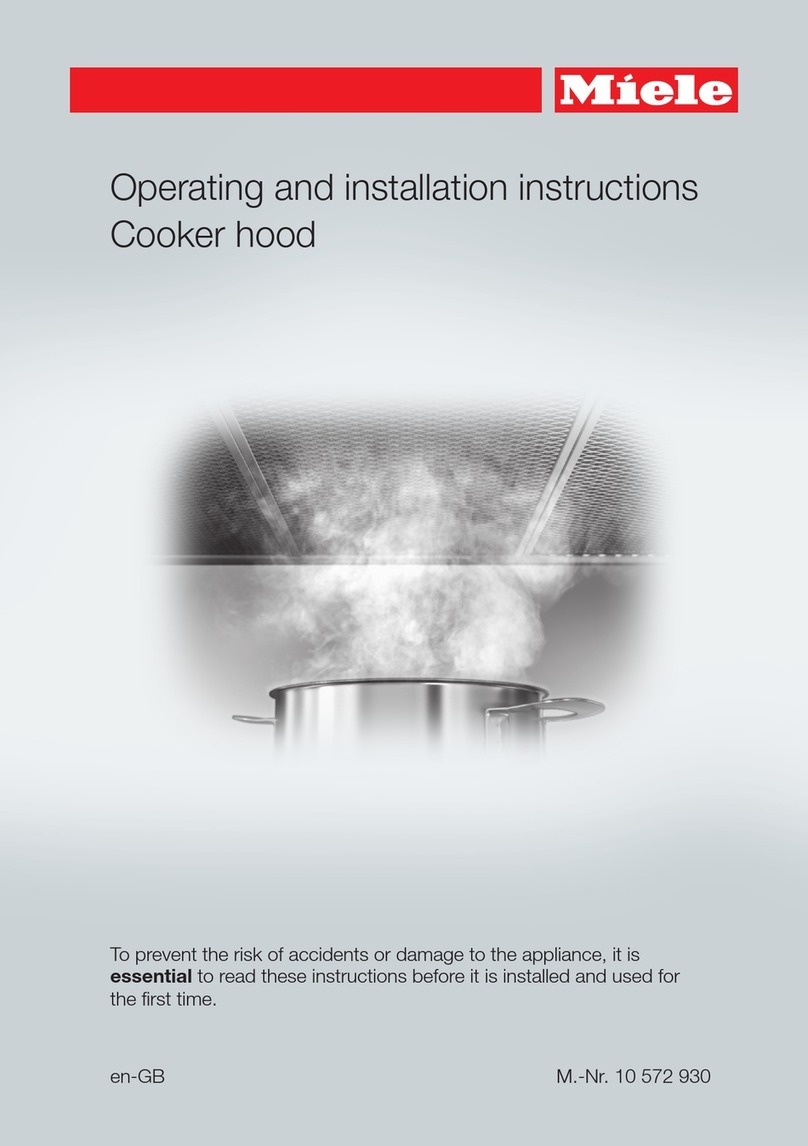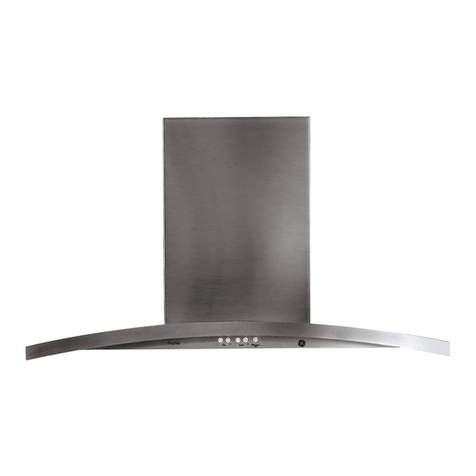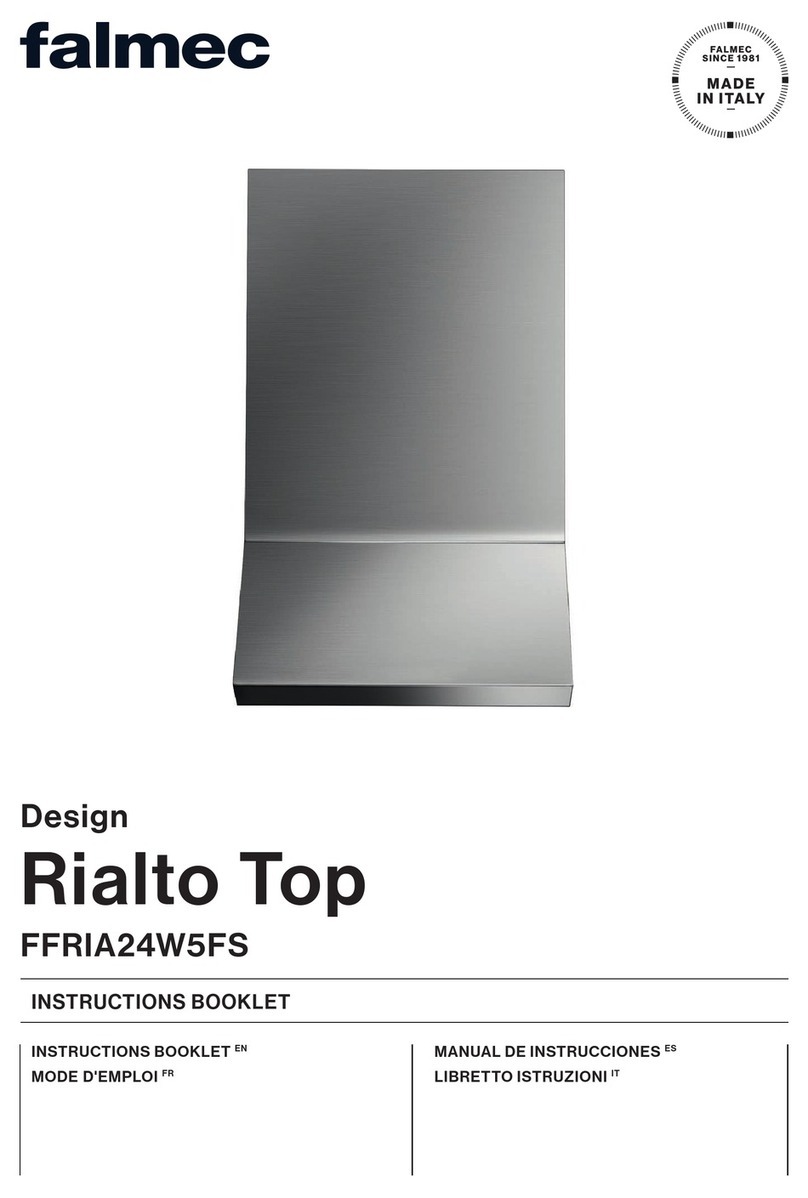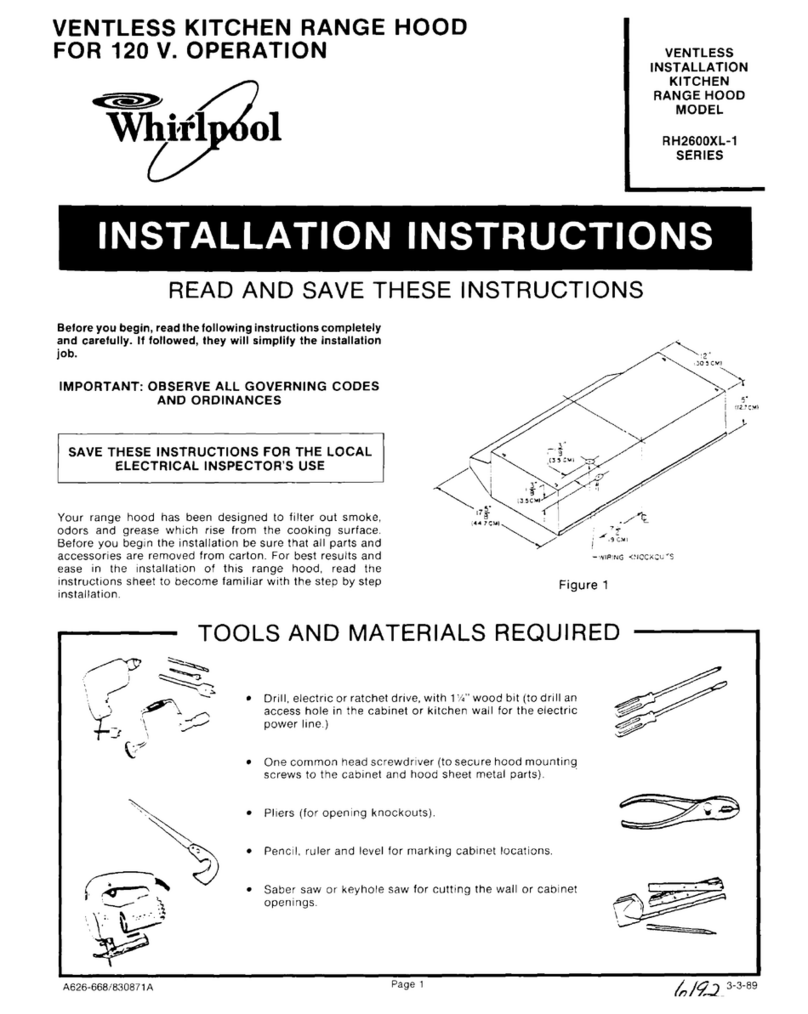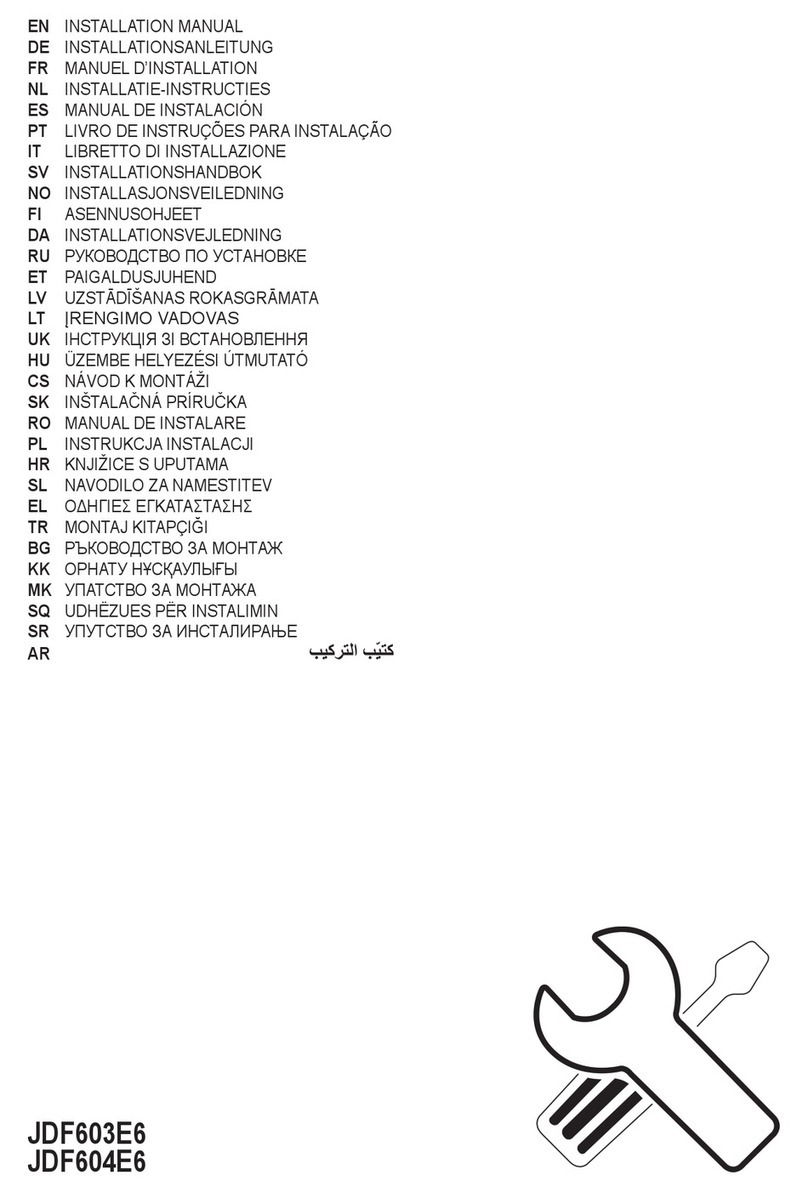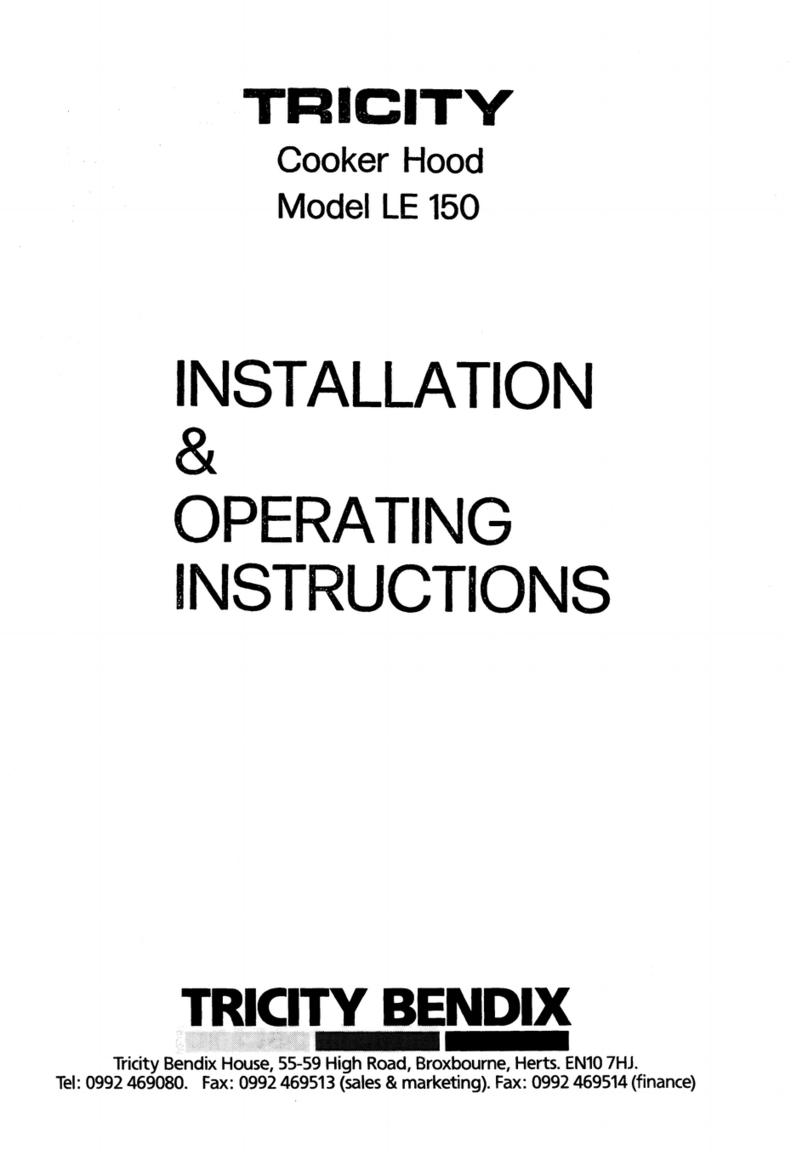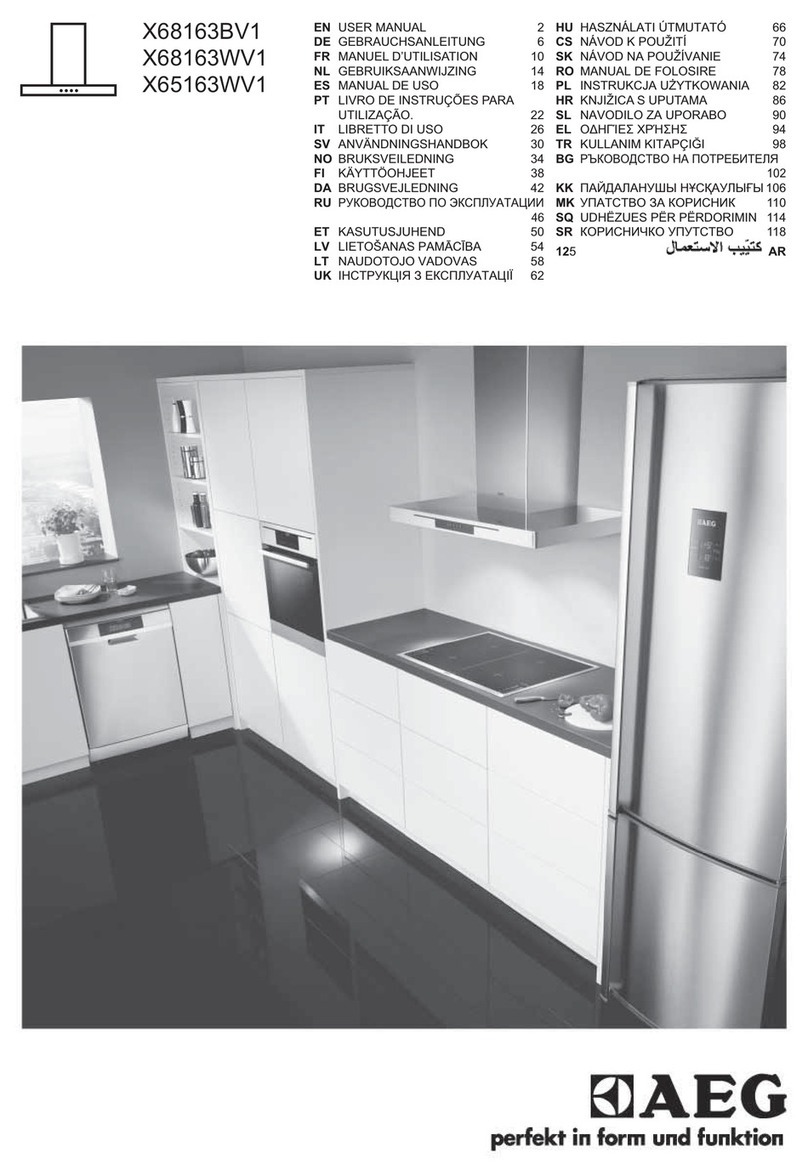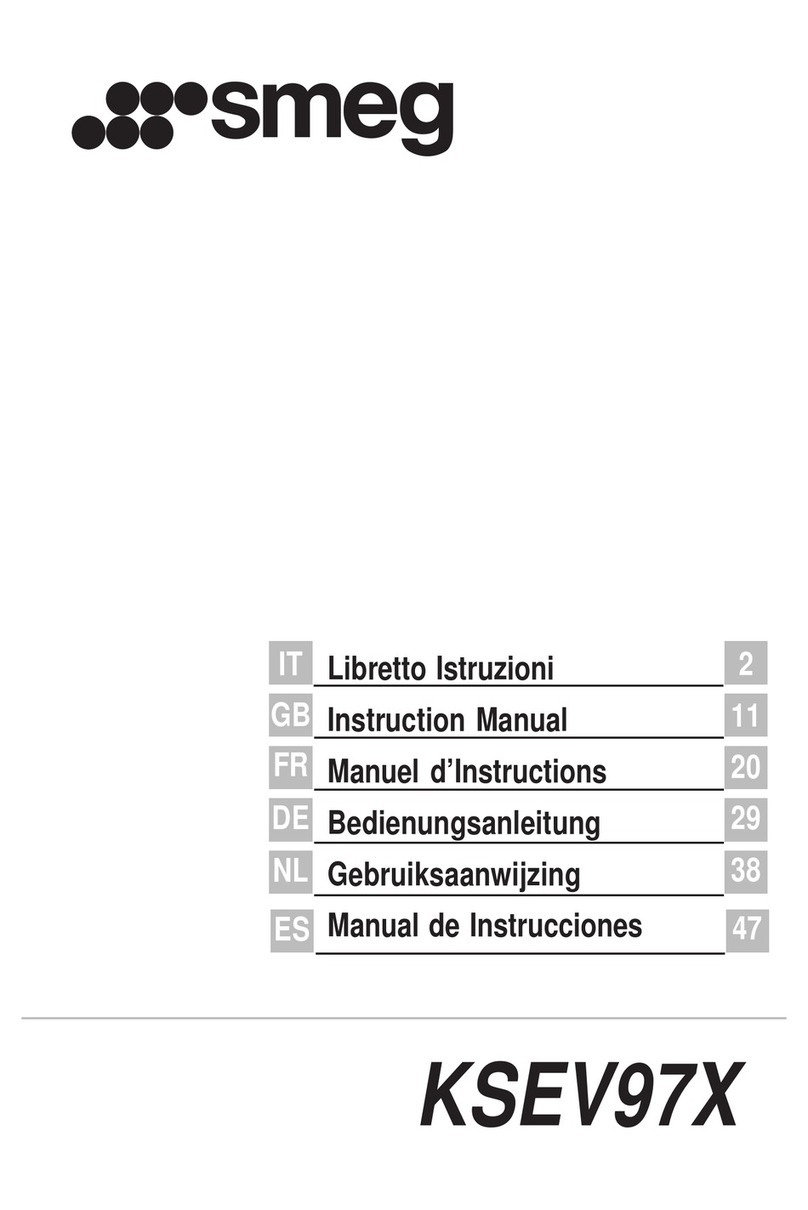
WARNINGS
- The cooker surface and the inferior part of
the cooker hood must be at a minimun
distance of 65 cm.
- The air sucked can’t be conveyed throu-gh or
into a duct used to let out fumes from
appliances fed by energy other than electric
power (eg. centralized heating, ra-diators,
water-heaters, etc.).
- Attention: remove any possible pvc film
from the stainless steel.
- To evacuate the air outlet, please comply
with the pertaining rules given by compe-tent
authorities.
- Provide the room with an adequate aeration
when a cooker hood and appliances fed by energy
other than electric power (gas-, oil-, or coal- stoves,
etc.) are used simultaneously. The cooker hood,
when evacuating the sucked air, could generate a
negative pressure in the room- which can’t exceed
the limit of 0.04 mbar, in order to avoid the suck
of exhausts deriving from the heat-source.
Therefore the room should be provided with air-
intakes to allow a costant flow of fresh air.
If the rating lable in the cooker-hood shows the
symbol , the appliance is built in class II° and it
does not need any earth connec-tion.
If the rating lable in the cooker-hood does not
show the symbol , the appliance is built in class
I° and it needs the earth con-nection.
- When performing the electrical connections on
the appliance, please make sure that the current-
tap is provided with earth connection and that
voltage values correspond to those indicated on
the label placed inside the ap-pliance itself.
- Before carrying out any cleaning or main-taining
operations, the appliance needs to be removed
from the electric grid. If the applian-ce is not
provided with a non-separable flexi-ble cable and
plug, or with another device
5
ensuring omnipolar disconnections from the grid,
with an opening distance between the contacts of
at least 3 mm, then such discon-necting devices
must be supplied within the fixed installation.
If the fixed appliance is endowed with a sup-ply
cord and a plug, the appliance has to be put in a
place where the plug can be reached easily.
- The use of materials which can burst into
flames should be avoided in close proximity of
the appliance. When frying, please pay
particular attention to fire risk due to oil
grease. Being highly inflamma-ble, fried oil is
especially dangerous. Do not use uncovered
electric grills. In order to avoid possible fire
risk, all instructions for grase-filter cleaning
and for removing eventual grease deposits
should be strictly followed.
Extraction methods
The appliance is already arranged both for
filtering and for suction performances.
- In its filtering version (Fig.1), the air and fumes
conveyed by the appliance are depured both by a
grease filter and by an active coal filter, and put
again into circulation through the hole made on
the top of the cabinet.
- In its sucking version (Fig.2), fumes are di-rectly
conveyed outside, through an evacua-tion duct
connected with the superior part of the wall or the
ceiling. Both coal filter and air deflector are not
necessary in this case.
INSTALLATION
- Before installing the appliance, in order not to
damage the appliance itself, the metal grase filter
should be removed. These filter could be removed
by pushing the handles towards the back side of
the cooker hood and turning it downwards to
unfasten it from its slot. (Fig.3).
